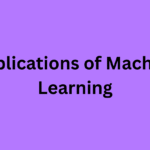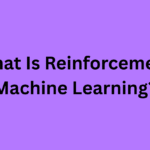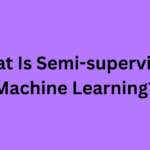Supervised Machine Learning is a branch of artificial intelligence (AI) where a model learns to make predictions or decisions by training on a labeled dataset. In this approach, each training example consists of an input (features) and the corresponding output (label or target). The goal is for the model to learn the relationship between the inputs and outputs so it can predict outcomes for new, unseen data.
Components of Supervised Machine Learning:
1.) Labeled Data:
- The dataset contains input-output pairs (e.g., emails labeled as “spam” or “not spam,” house prices paired with features like size and location).
- The labels act as “supervision” to guide the learning process.
2.) Training Process:
- The model analyzes patterns in the labeled data to learn how inputs map to outputs.
- It adjusts its internal parameters to minimize prediction errors (e.g., using algorithms like gradient descent).
3.) Prediction:
- Once trained, the model can predict outputs for new, unlabeled inputs (e.g., classify a new email as spam or predict a house price).
Types of Supervised Learning:
1.) Classification:
✔️ Predicts discrete categories (e.g., “yes/no,” “cat/dog”).
✔️ Examples:
- Spam detection (spam vs. not spam).
- Medical diagnosis (disease present or not).
✔️ Algorithms: Logistic Regression, Decision Trees, Support Vector Machines (SVM), Neural Networks.
2.) Regression:
✔️ Predicts continuous numerical values (e.g., temperature, stock price).
✔️ Examples:
- Predicting house prices based on features like square footage.
- Forecasting sales revenue.
✔️ Algorithms: Linear Regression, Random Forests, Gradient Boosting.
How It Works:
1.) Data Preparation:
- Collect labeled data and split it into training and test sets.
- Preprocess data (clean, normalize, handle missing values).
2.) Model Training:
- The model learns by comparing its predictions to the true labels and adjusting its parameters to reduce errors (e.g., minimizing a loss function like Mean Squared Error or Cross-Entropy).
3.) Evaluation:
- Test the model on unseen data using metrics like: ✔️ Classification: Accuracy, Precision, Recall, F1-Score. ✔️ Regression: Mean Absolute Error (MAE), R² Score.
4.) Deployment:
- Use the trained model to make predictions on real-world data.
Example Supervised Machine Learning:
Imagine teaching a child to recognize animals using flashcards:
- Input (Features): Image of an animal.
- Output (Label): Name of the animal (e.g., “cat,” “dog”).
- After seeing many labeled examples, the child (model) learns to identify animals independently.
Common Algorithms:
- Linear/Logistic Regression
- Decision Trees
- Random Forests
- Support Vector Machines (SVM)
- Neural Networks
- k-Nearest Neighbors (KNN)
Advantages:
- Well-suited for tasks with clear input-output relationships.
- Easy to evaluate performance using labeled test data.
- Widely used in real-world applications (e.g., fraud detection, image recognition).
Challenges:
- Requires large amounts of labeled data, which can be expensive or time-consuming to collect.
- Risk of overfitting (model memorizes training data but fails on new data).
- Bias in training data can lead to biased predictions.
Real-World Applications:
- Email filtering (spam vs. non-spam).
- Credit scoring (approve/deny loans).
- Medical imaging (detect tumors in X-rays).
- Self-driving cars (object recognition).
Supervised Machine Learning is a foundational AI technique where models learn from labeled datasets to predict outcomes. Each training example includes an input (features) and a corresponding output (label), allowing the model to discern patterns between them. For example, in email spam detection, inputs are email content, and labels are “spam” or “not spam.” During training, the model adjusts its parameters using algorithms like gradient descent to minimize errors (e.g., via loss functions such as cross-entropy or mean squared error).
This approach tackles two core tasks: classification, predicting discrete categories (e.g., disease diagnosis), and regression, estimating continuous values (e.g., house prices). Algorithms like logistic regression, decision trees, and neural networks are commonly used. Performance is evaluated using metrics such as accuracy, precision, and F1-score for classification, and mean absolute error (MAE) or R² for regression.
While powerful, supervised learning requires extensive labeled data, which can be expensive to acquire. Challenges include overfitting (memorizing training noise) and underfitting (oversimplifying patterns), addressed via techniques like regularization and cross-validation. Despite these hurdles, it drives critical applications in healthcare (diagnostic imaging), finance (credit scoring), and autonomous systems (object detection). By leveraging historical data to predict future outcomes, supervised learning remains pivotal in advancing AI solutions across industries.
Read Also: What Is Machine Learning? A Clear Definition and Beginner’s Guide







